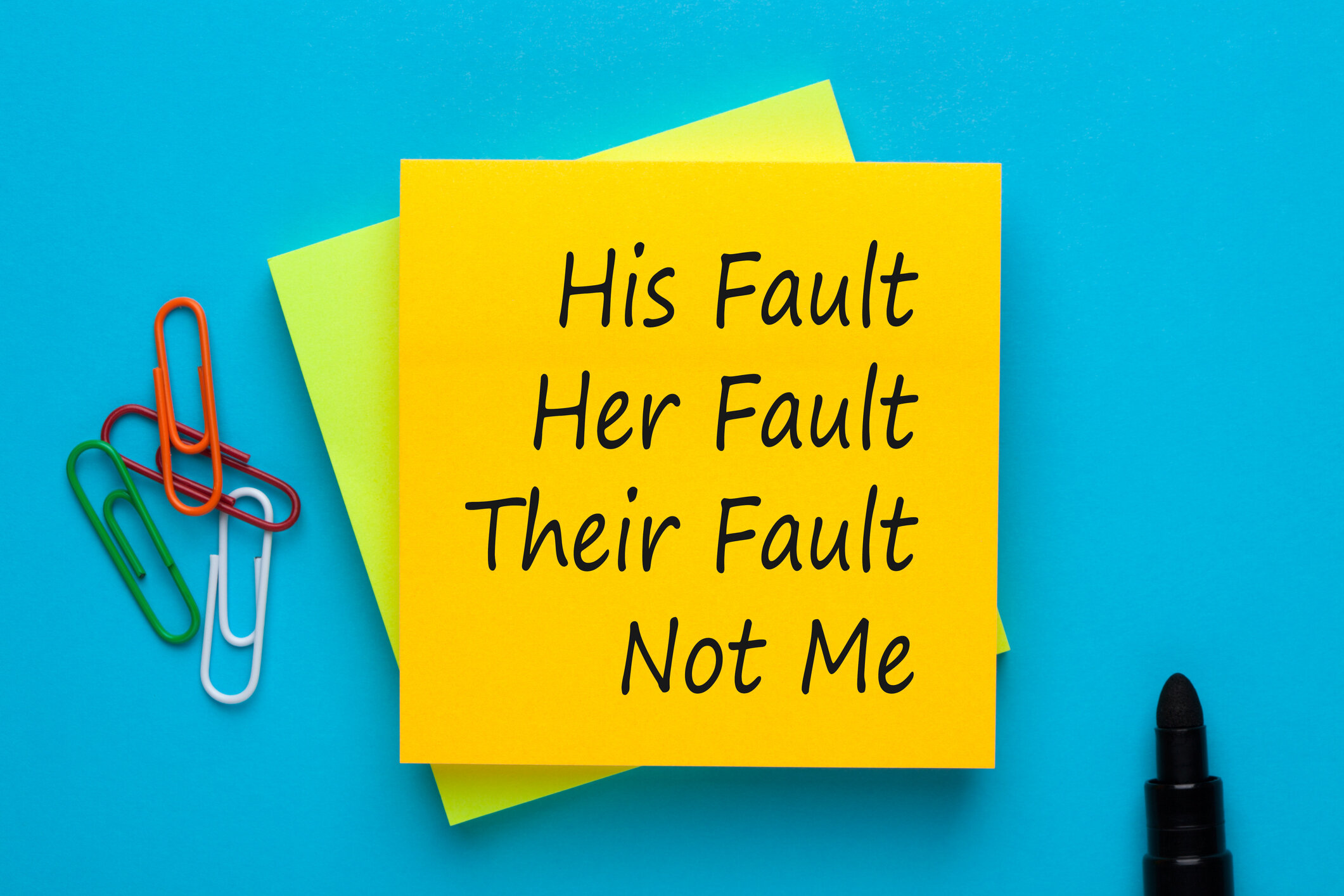“It’s Not Me, It’s You”

Do you have the urge to want to make a run for it when someone is talking your ear off with complaints after complaints? Do they seem to find fault in everything (and everyone) and strongly believe that they are always in the right? People behaving this way will point fingers rather than raising a helping hand or looking in the mirror. In other words, they blame others for the way they feel and try to bring others down with them. Ultimately, this will create a workplace of tension and mistrust. The focus here will be on what to do when the problem has escalated to formal complaints and how to approach it for the purposes of establishing a positive work environment for one and all.
What Exactly Is A Toxic Environment?
A toxic environment is any place or any behaviour that causes harm to your health, happiness, and well-being. One example of a toxic environment is the blame game. This mentality can seem harmless on the surface but can lead us down a dark road to a dead end where no one benefits. Minus the metaphors, a toxic environment leads to poor team performance and decreased levels of morale. Most people will be wary and stay away from a toxic employee. However, avoidance is only short-term and eventually we are going to have to deal with it when the negativity begins to spread and affect others.
Recognizing A Workplace Blamer
Blamers constantly let others know that their issues are caused by others or by their environment- it’s not them. This means that blame will fall onto others when work situations fall apart or fail. In these instances, there are always problems with no solutions, and teamwork and collaboration aren’t possible.
Start the Conversation – Book a Meeting

Book a meeting with the employee in question and openly say that others have expressed concerns about the person’s behaviour. State that the purpose of this meeting is to make the employee aware that concerns have been brought up about them and to give the employee the opportunity comment on why they think that others are expressing these concerns. It’s important to remain neutral and collect the information being said. They may share why they are acting in this way, or they may have no idea as to why others are concerned. Either way, you have a better understanding of what you’re dealing with and how to proceed.
Avoid being drawn into the Negativity
A blamer will try to lure others into the act and others may surrender themselves to the same poor behaviour out of fear. Why? It is sometimes easier to conform or condone to the negative attitude than it is to avoid, ignore, or disagree because most of us dread confrontation more. Don’t give in, but rather team up with someone else who shares your values and positive nature and stay true to yourself and your self-worth. Seek guidance from someone you trust to start creating a support network to make positive change happen for you and everyone else.
Training or Employee Assistance Program (EAP)?
When having these discussions, it should be clearer as to whether a genuine mean-spirited behaviour is at play, such as a supervisor being the cause and needs to be put into a leadership training program. Sometimes more of a situational issue is present, such as an employee is going through a nasty separation and a custody battle and needs an Employee Assistance Program (EAP).
Performance Reviews and Corrective Action
An ongoing poor attitude and behaviour should be discussed and, if necessary, documented in a performance review and/or corrective action (progressive discipline). Take these actions with their manager present for third party support and remind the employee about the importance of adhering to the organization’s Professional Code of Conduct. To be clear, talk about the behaviours that are supported in the organization and the behaviours that are not.
Regardless, if harassment or anything else as serious as this has occurred, then a formal investigation is required immediately.
Follow-up
Be careful not to close things off too quickly. Check in regularly on those affected and find out if things have improved or not. As we know, change most often doesn’t happen overnight. We need to keep in touch with employees and show that they are important, and their well-being matters to us. This is the kind of behaviour and respect that we want to spread onto others. Let’s lead by example.
Final Remarks

Creating an enriched, fulfilling, and positive work culture happens with support, effort, and always starts and ends with genuine human decency. We also need to do our part and stand up for what is right as an employee, HR person, or Leader– even if it means the discomfort of calling out what is wrong. Negativity can spread across the entire organization and affect all working relationships inside and outside of work, including customers and clients. Be sure to have those uncomfortable conversations and not shy away from confronting and addressing poor behaviour. We all have bad days – we can’t expect positive behaviour from everyone all the time. Stay calm at first – ask them if they are OK rather than take immediate offense and match their behaviour. It’s when someone is disrespectful and has an ongoing poor attitude that action needs to take place. If it’s unmanageable and affecting you or others, then seek the necessary support for everyone’s sake and well-being.
For advice and recommendations when challenged with a toxic workplace; contact CulturedHR.com or 519-546-7743.
Be kind everyone!





